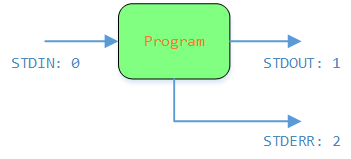Linux重定向与管道

程序执行时默认会打开3个流,标准输入、标准输出、标准错误。
Redirection
The shell interprets the symbols <,>, and >> as instructions to reroute a command's input or output to or from a file.
Pipes
To connect the STDOUT of one command to the STDIN of another use the | symbol, commonly known as a pipe.
重定向:用于输入和输出文件(流)
管道:用于将前一个命令(程序)的输出作为另外一个命令(程序)的输入。
重定向Redirection
1、重定向到一个文件>:将输出STDOUT/STDERR重定向到一个文件,如果文件存在,就先清空文件内容,再保存;如果不存在,就创建一个新文件。
>>:将输出STDOUT/STDERR重定向追加到一个文件。如果文件存在,则追加到文件最后;如果不存在,则创建一个新文件。
>>:将输出STDOUT/STDERR重定向追加到一个文件。如果文件存在,则追加到文件最后;如果不存在,则创建一个新文件。
2、将文件重定向到一个命令或者程序的输入STDIN
<读取文件,并将内容重定向到命令或者程序的STDIN
3、重定向标准输出STDERR
2>file
2>&1
2>&1
管道Pipe
[command1] | [command2]
>: Save output to a file. >>: Append output to a file. <: Read input from a file. 2>: Redirect error messages. |: Send the output from on program as input to another program.



